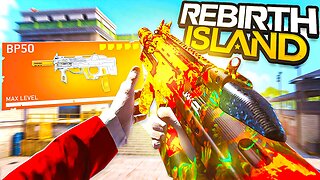Premium Only Content

Las Vegas Cuban Cuisine - Dining - Downtown Doral - The Facts
Cuban cuisineand Schwartz, Joan, Memories of a Cuban Kitchen area: More than 200 traditional recipes. New York City: Macmillan. 1992. External links [edit]
INDICATION UP TO GET OFFERS & Advertising Close Window.
At the center of standard Cuban culture in Miami is Little Havana, and with it comes years of rich history. Maybe no other culture has shaped so much of South Florida. Cuisine is a perfect example. What we think of as Miami cuisine is really our spin on standard Cuban food.
Very first wave A consistent variety of Cubans had been immigrating to the United States, specifically Key West, long prior to Castro took power. The first recorded Cuban family to transfer to Miami was that of Eduardo Luis Gonzalez, in 1896. Numbers from that period are scarce, however some sources note that previous to 1959, there were as many as 10,000 to 20,000 Cubans in the Little Havana location.
There were four considerable waves that changed the course of the city's history, and the very first started the moment Castro took power. The country's elite were the first to leave. This group of elites included executives and company owners, merchants, and leaders of agricultural residential or commercial properties like sugar mills that was very important to the nation's economy.
Much of this movement happened when travel between both countries was still legal. A primary product of this first wave was Operacin Pedro Pan (Operation Peter Pan), where an overall of 14,000 unaccompanied minors were brought to the United States to live with loved ones or family pals for fear of their brainwashing.
With a lot of Cubans arriving to the United States, a processing center was developed inside of the Liberty Tower. Formerly home to Miami's first newspaper, The Miami News, the Spanish-style structure operated as its own version of New york city's Ellis Island. Today, the structure is owned by Miami-Dade College and homes an art museum.
To further aid a smooth shift, the federal government developed the Cuban Refugee Program in 1961, which dispersed non-perishable foods to the refugees like powdered eggs, canned meats, and peanut butter. At the time, nobody knew how long this new regime would last. Lots of pertained to Miami with hopes of one day returning home.https://www.facebook.com/profile.php?id=100063449813934
-
 5:48:07
5:48:07
JuicyJohns
5 hours ago $2.43 earned🟢#1 REBIRTH PLAYER 10.2+ KD🟢$500 GIVEAWAY SATURDAY!
55K3 -
 LIVE
LIVE
IrishBreakdown
1 hour agoNotre Dame Fall Camp Practice Report
60 watching -
 1:04:08
1:04:08
Timcast
2 hours agoPelosi MELTS DOWN After Trump Accuses Her Of INSIDER TADING, PELOSI ACT Moves Forward
111K63 -
 1:54:53
1:54:53
Steven Crowder
5 hours ago🔴 Is the Sig Sauer P320 Killing People & Trump Wins the Trade War: Guest Brandon Herrera
249K207 -
 1:09:57
1:09:57
Rebel News
1 hour agoCanada to recognize Palestine, US trade deadline looms, Charter-protected bike lanes | Rebel Roundup
4.22K3 -
 DVR
DVR
TheAlecLaceShow
2 hours agoGuest: Roger Stone | Kash Patel Finds Hoax Docs in Secret FBI Room | The Alec Lace Show
5.19K2 -
 1:43:37
1:43:37
The Rubin Report
3 hours agoWhy I’m Taking a Break
38.2K35 -
 1:36:22
1:36:22
The Mel K Show
3 hours agoMORNINGS WITH MEL K -Truth Tsunami Alert: Panic in DC! 7-31-25
17.7K7 -
 2:08:44
2:08:44
Benny Johnson
4 hours ago🚨CIA Whistleblower SPEAKS! Tulsi Gabbard Joins LIVE to Expose New Obama-Gate BOMBSHELL: 'Burn Bags'
80.1K102 -
 1:20:39
1:20:39
The Shannon Joy Show
3 hours ago🔥🔥Trump To Pardon Sean ‘Diddy’ Combs? Live Exclusive with Child Sex Trafficking Expert & Advocate Dani Pinter! 🔥🔥
26.4K4